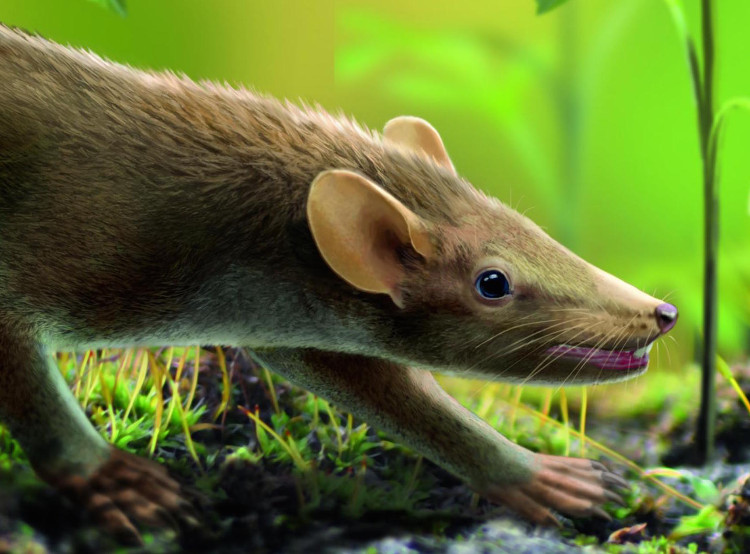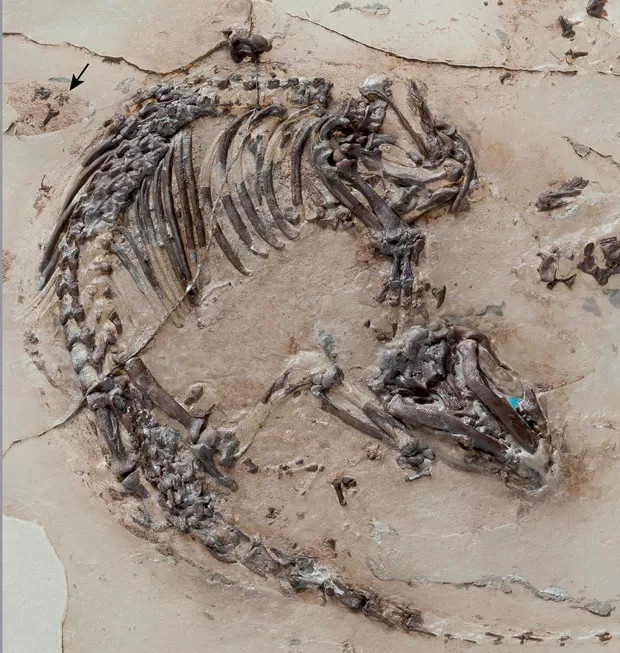The 125 million-year fossil remains intact, the hair of prehistoric mice
The 125-million-year-old fossil of the small reptile in intact marshes can even see feathers, skin and organs clearly visible.
The 125-million-year-old fossil skeleton of the Spinolestes xenarthrosus species was found in a rock ore near the Spanish city of Cuenca with ear, lung, liver and fur-shaped skin, according to the Guardian.

Illustration of Spinolestes living in Las Hoyas Wetlands.(Photo: Oscar Sanisidro).
All ears, lungs, liver, fur skin and sharp spines on the lower back of the animal are fossilized. Studies have even found signs of fungal skin infections in the skeleton.
Fossil hunters at the University of Madrid, Spain, found the Spinolestes fossil in 2011 while digging out thin leaves covering limestone sediments at the Las Hoyas mine. "The results of soft tissue preservation are excellent," said Thomas Martin, a professor of paleontology at the University of Bon. "Hairs have the same structure and diversity as modern mammals."
According to the research team, the lower back spines of animals have a protective effect against predators such as Pelecanimimus, a meter-like ostrich-like creature. These thorns are easy to fall and fill the enemy's mouth with Spinolestes. In addition, the animal has small scales on its back to protect the body, like the original scales of the tatu.

125 million year fossil skeleton of Spinolestes.(Photo: Georg Oleschinski).
Martin thinks the creature is well preserved by the bacterial membrane covering the body within a few hours after death. This biofilm can form a protective shell, helping to preserve soft tissue for long enough to fossilize them.
Spinolestes belong to the extinct mammalian class called triconodonts . With a length of 24cm and a weight of 70g, they are only as big as a modern mouse. This animal specializes in eating insects. Spinolestes are the first example of Mesozoic mammals with fossilized soft tissues in the chest and abdomen.
- Germany: Detecting 3 million-year-old fossil remains red
- The marine fossil remains intact after 525 million years
- 200 million year long sea fossil remains intact
- The intact fossil after 120 million years reveals a mysterious loss of prehistoric animals
- 97 5,000-year-old remains were deformed in a house of 20 square meters
- Found 16,000-year-old human skull nearly intact
- Find jewels in a 100 million year old son
- The head of a 40,000-year-old beast remains intact in Siberia
- The most intact bird fossil in amber 99 million years
- Marvel at the remains of strange creatures with human legs and gibbon arms
- Discover intact marine life in amber 99 million years
- The relics in the volcanic cave have bones of prehistoric people in Dak Nong
 Discovered an ancient centipede fossil 99 million years old
Discovered an ancient centipede fossil 99 million years old Discovered bat-like dinosaurs in China
Discovered bat-like dinosaurs in China Discovered a 200-year-old bronze cannon of the coast
Discovered a 200-year-old bronze cannon of the coast Discover 305 million-year-old spider fossils
Discover 305 million-year-old spider fossils